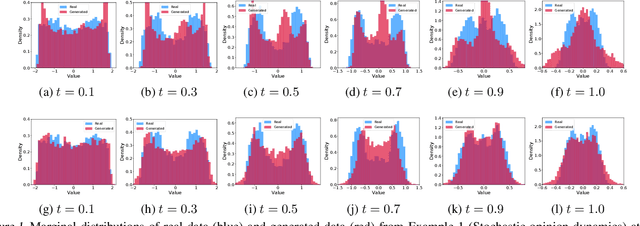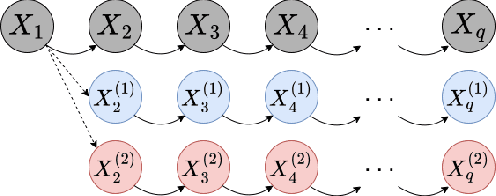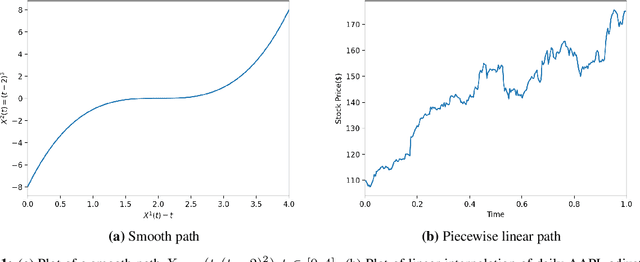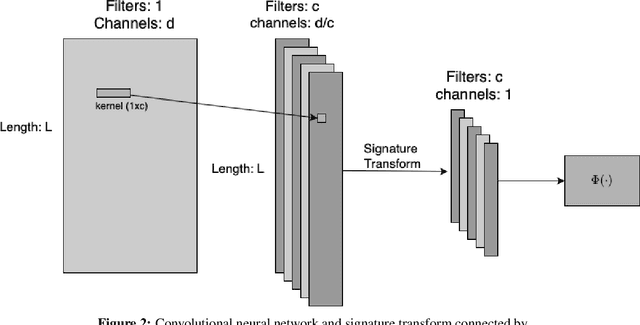Tomoyuki Ichiba
Directed Chain Generative Adversarial Networks
May 05, 2023



Abstract:Real-world data can be multimodal distributed, e.g., data describing the opinion divergence in a community, the interspike interval distribution of neurons, and the oscillators natural frequencies. Generating multimodal distributed real-world data has become a challenge to existing generative adversarial networks (GANs). For example, neural stochastic differential equations (Neural SDEs), treated as infinite-dimensional GANs, have demonstrated successful performance mainly in generating unimodal time series data. In this paper, we propose a novel time series generator, named directed chain GANs (DC-GANs), which inserts a time series dataset (called a neighborhood process of the directed chain or input) into the drift and diffusion coefficients of the directed chain SDEs with distributional constraints. DC-GANs can generate new time series of the same distribution as the neighborhood process, and the neighborhood process will provide the key step in learning and generating multimodal distributed time series. The proposed DC-GANs are examined on four datasets, including two stochastic models from social sciences and computational neuroscience, and two real-world datasets on stock prices and energy consumption. To our best knowledge, DC-GANs are the first work that can generate multimodal time series data and consistently outperforms state-of-the-art benchmarks with respect to measures of distribution, data similarity, and predictive ability.
Convolutional Signature for Sequential Data
Sep 14, 2020



Abstract:Signature is an infinite graded sequence of statistics known to characterize geometric rough paths, which includes the paths with bounded variation. This object has been studied successfully for machine learning with mostly applications in low dimensional cases. In the high dimensional case, it suffers from exponential growth in the number of features in truncated signature transform. We propose a novel neural network based model which borrows the idea from Convolutional Neural Network to address this problem. Our model reduces the number of features efficiently in a data dependent way. Some empirical experiments are provided to support our model.
 Add to Chrome
Add to Chrome Add to Firefox
Add to Firefox Add to Edge
Add to Edge